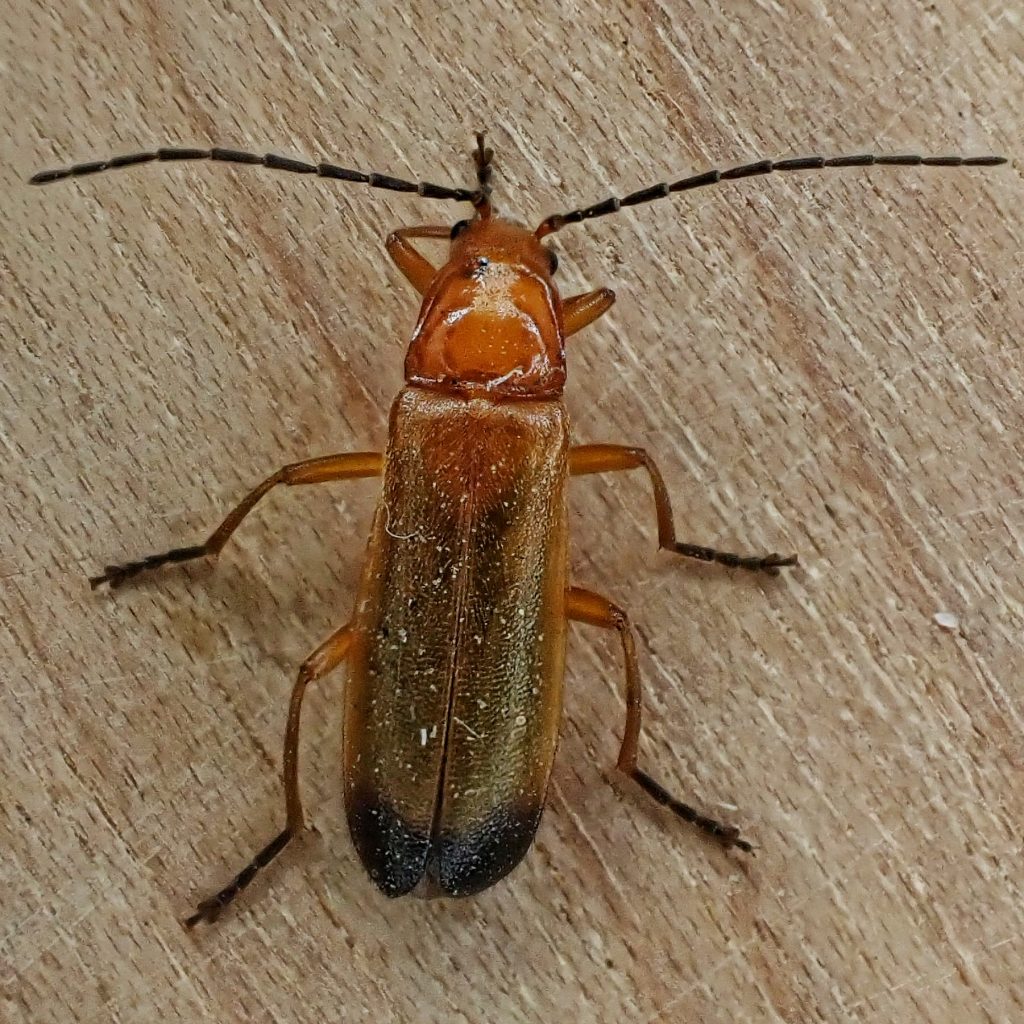
These beautiful and striking bugs are members of the family Cantharidae (soldier beetles). Since this is my first profile of a Cantharid I should explain that they get the name soldier beetles because their brightly colored elytra reminded some of the regimental coats worn by soldiers in bygone days. Oddly, the members of Cantharidae do not produce cantharidin (a chemical irritant that is the primary ingredient in Spanish fly). Instead they produce dihydromatricaria acid (and are the only animals known to do so) which is released from their abdomen and thorax as a chemical defense. And they advertise this possibility with that bright, aposematic coloring.
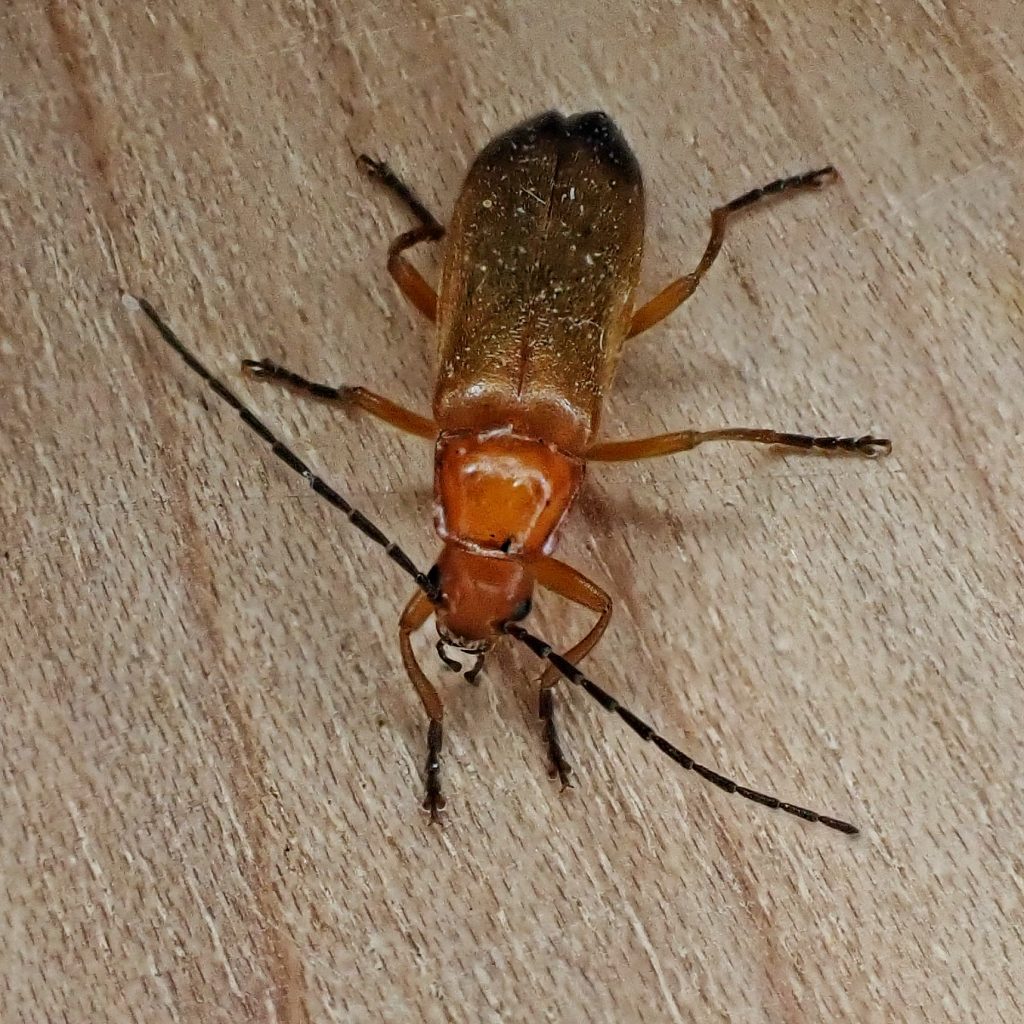
This species also goes by the common name of bloodsucker beetles, a reference to their coloration but a complete misnomer since they do not, in fact, suck blood. In Europe, where they are native, they also have the common name hogweed bonking beetle, because of a preference in their native habitat for hanging out on hogweed (Heracleum spondylium) and a tendency to engage in lengthy, and often communal, acts of mating, in plain sight and regularly throughout the summer.
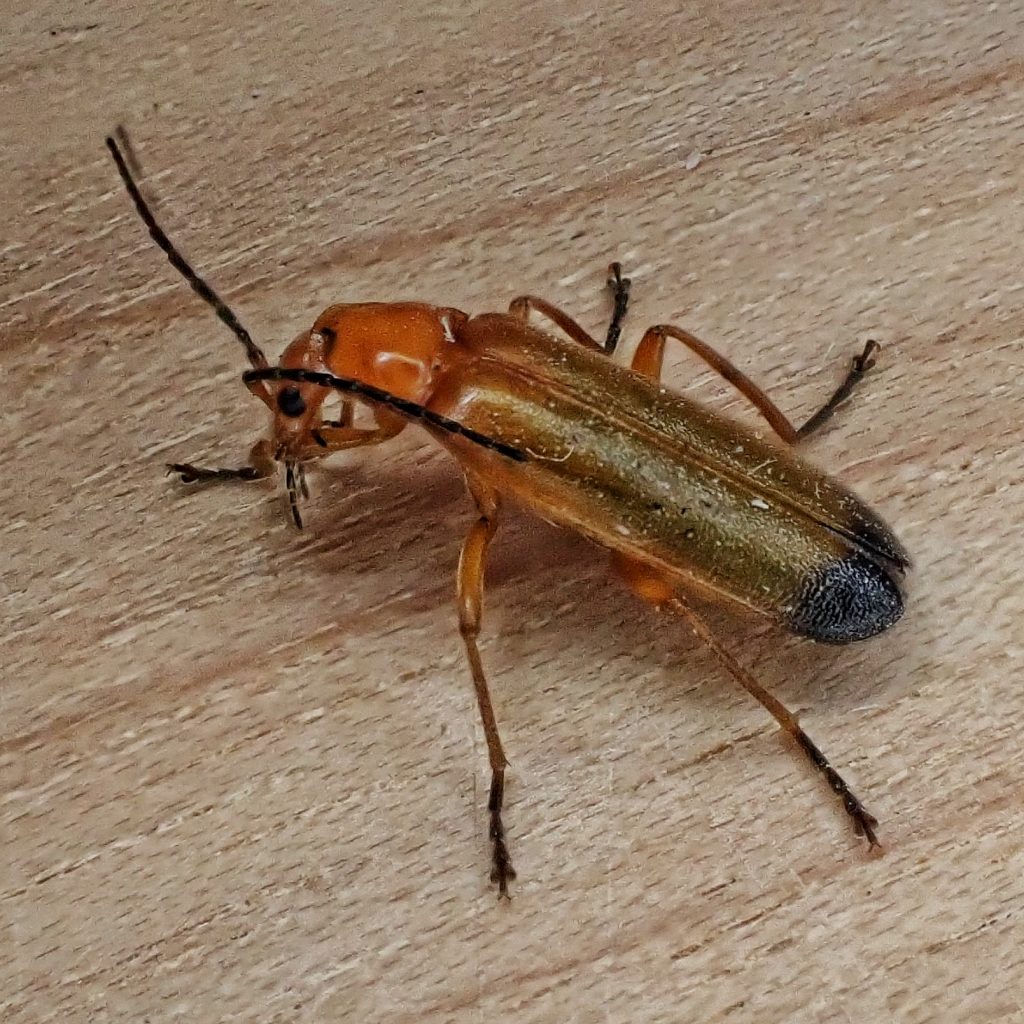
In North America they are found thus far only in the northeast and northwest. They also utilize Heracleum spp. here for hunting and mating, as well as several other plants in the family Apiaceae (parsleys and carrots), and many different species of Asteraceae. I found this one and several others on the leaves of cultivated sunflowers in direct sunlight on a 98⁰ afternoon. The first couple dropped off the leaves before I could photograph them, so I captured and chilled this specimen before taking its portrait. Since I was able to identify it from its photograph I was able to free it on my next walk in the cemetery.
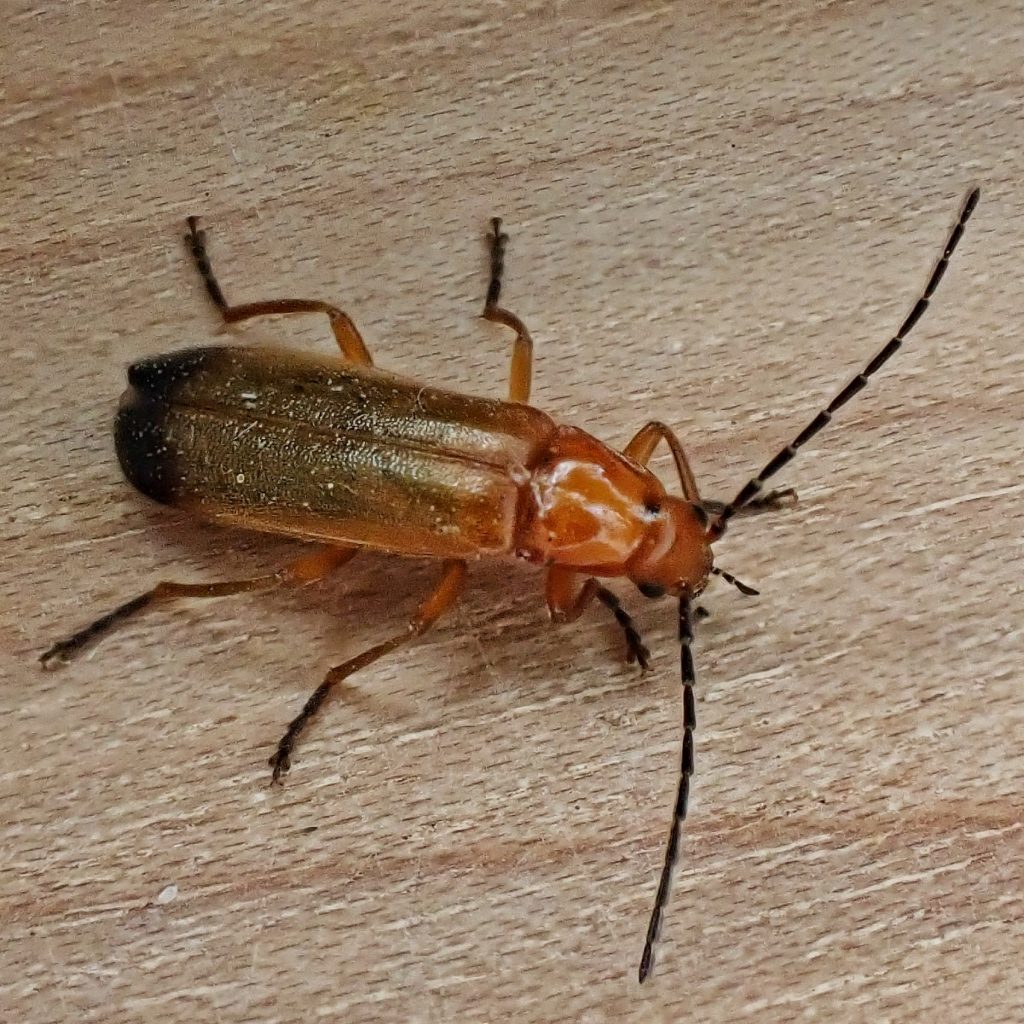
Description-Fairly small (7-10mm in length) orange shading to brown beetle with dark or black apexes of the elytra; head and pronotum orange red, pronotum as wide as the elytra; antenna black except for orange at base; legs mostly orange red, except tarsi are dark to black; females larger than males.
Similar species-The false blister beetle Nacerdes melanura has pale antenna, dark femora, narrower pronotum; the blister beetle Zonitis atripennis has a narrower pronotum and dark femora.
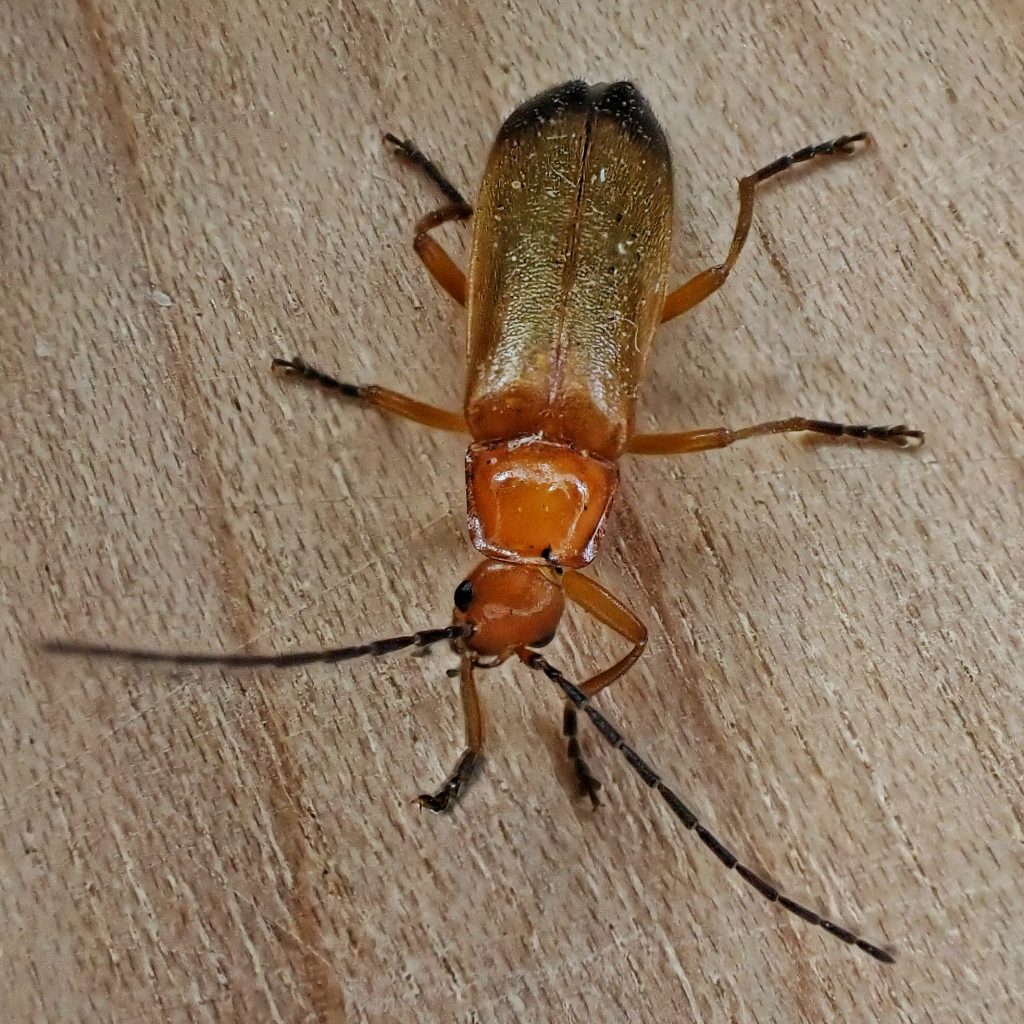
Habitat-Fields, meadows, gardens, weedy wastelands; often on flower heads
Range-Eurasian native introduced many years ago; seems to be found primarily west of the Cascades in our region.
Eats-Larvae eat snails, slugs, small insects and other ground dwellers; adults prey mostly on aphids, but also on other floral visitors, and consume pollen and nectar.
Eaten by-Larvae may be vulnerable to predation, but the adults are protected by various defense chemicals that render them unpalatable, and even slightly toxic for some predators.
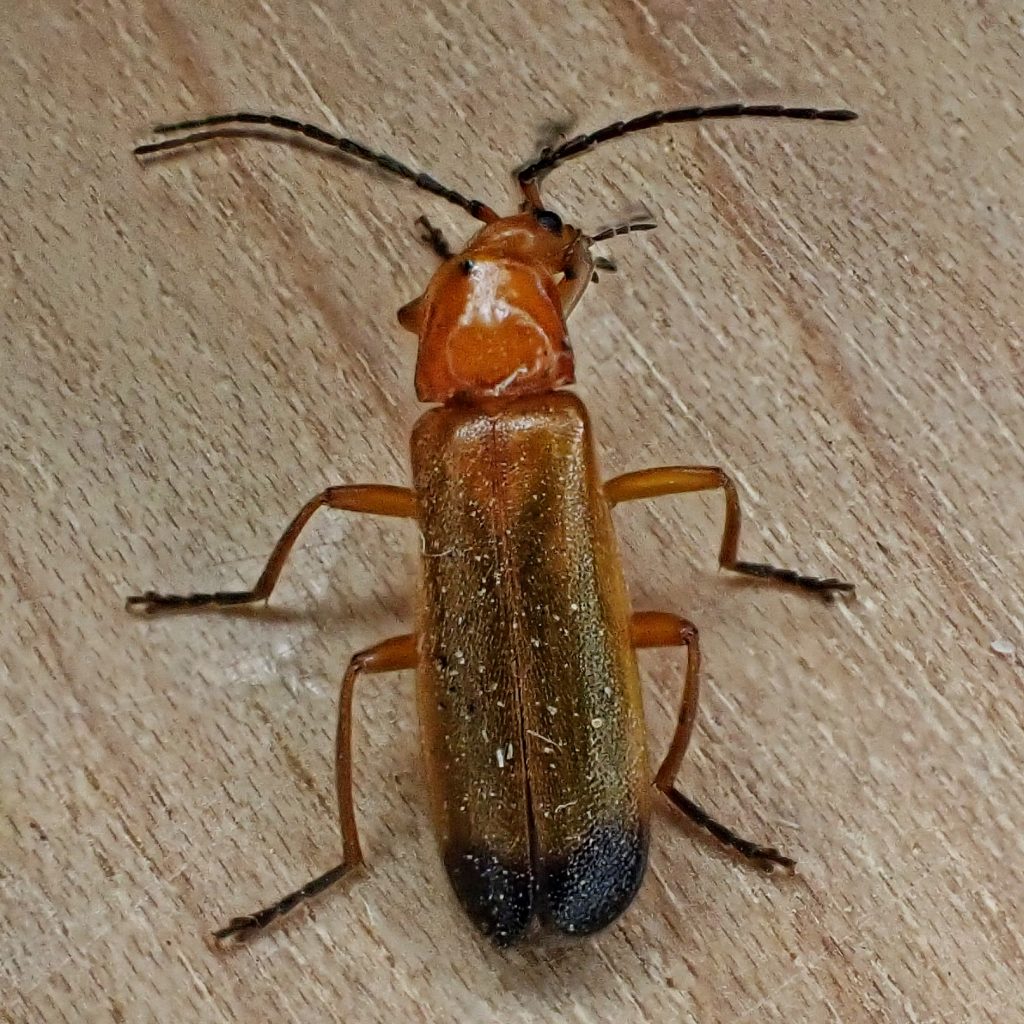
Reproduction-Univoltine; larvae overwinter; eggs are laid in soil, and larvae live at the base of tall grasses and weeds.
Adults active-June through August
Etymology of names–Rhagonycha is from the Greek words for ‘broken claw’, though I cannot seem to ascertain what that references. The specific epithet fulva is from the Latin for ‘reddish yellowish brown’, referring to the color of the elytra.
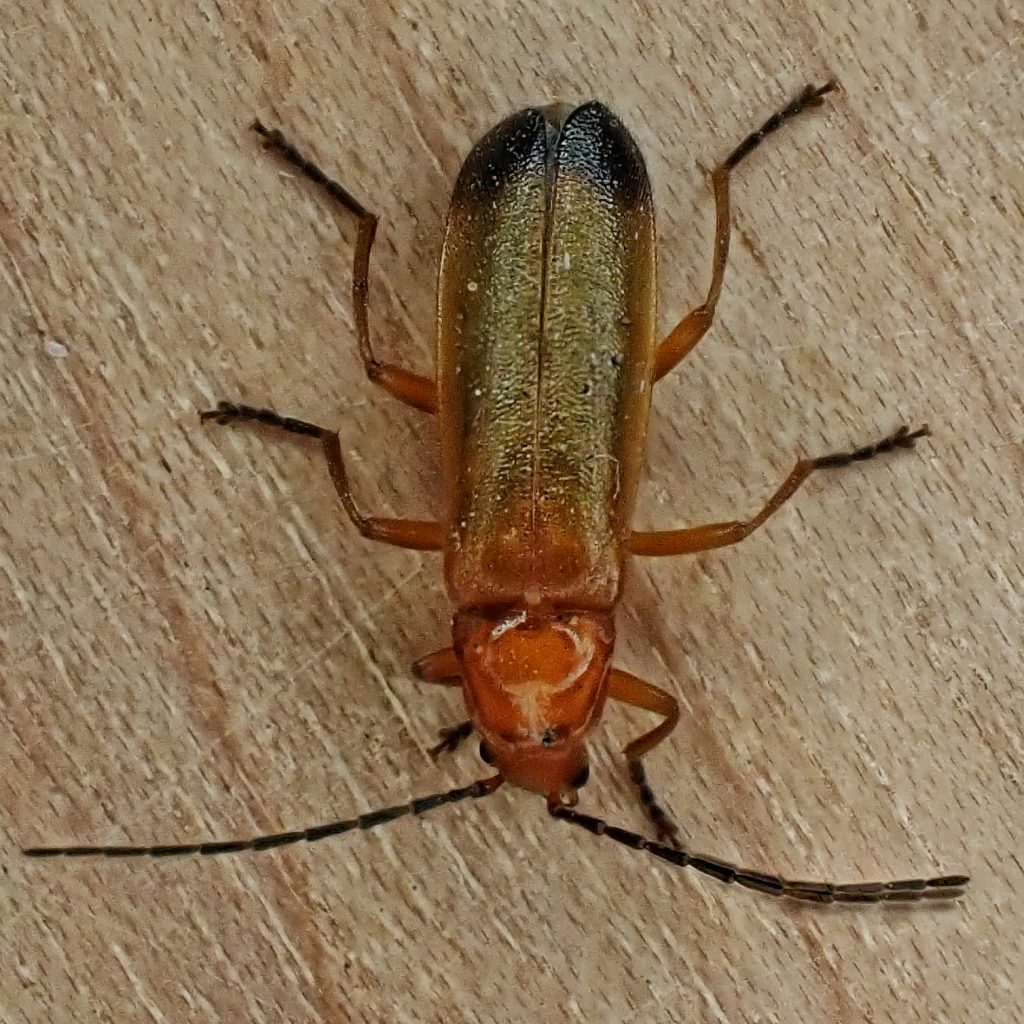
https://bugguide.net/node/view/89507
https://www.insectweek.co.uk/discover-insects/beetles/common-red-soldier-beetle
http://centaur.reading.ac.uk/81264/1/EJE_eje-201801-0043.pdf
https://en.m.wikipedia.org/wiki/Common_red_soldier_beetle

Thank you for this. My PNW insect book did not include this beetle which I’ve seen for the first time, and in great numbers in my garden (loving on my parsley flowers). I was afraid it was something that had emerged from the bark dust I got this year.
Thanks for your appreciation, Barbara! I assume you are talking about Haggard&Haggard’s ‘Insects of the Pacific Northwest’, which is a good book, but these are in Merrill Peterson’s “Pacific Northwest Insects”, which is a great book, and well worth buying. I consider it to be the gold standard of regional, multiple order field guides. Really glad my site could be useful to you!